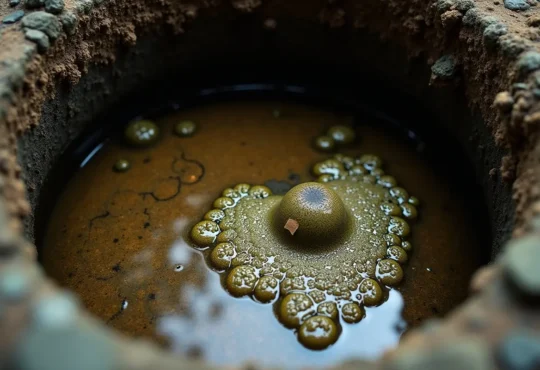
How to Remove a Sink Stopper
Sink stoppers are unassuming yet indispensable components of our bathrooms and kitchens, allowing us to temporarily halt water flow for various tasks. While a sink stopper seems innocuous, it can be challenging to remove it when it becomes stuck or clogged. Keep reading to conquer even the most stubborn sink stoppers, restoring harmony to your plumbing system.
Contents
- 1 Anatomy of Sink Stoppers
- 2 Preparing for the Removal Process
- 3 Removing Pop-Up Sink Stoppers: A Step-by-Step Guide
- 4 Removing Push-Pull Sink Stoppers: A Straightforward Process
- 5 Removing Flip-It Sink Stoppers: A Simple Twist and Pull
- 6 Removing Toe-Touch Sink Stoppers: A Push and Twist Technique
- 7 Troubleshooting Stubborn Sink Stoppers
- 8 Maintaining Your Sink Stoppers for Optimal Performance
- 9 FAQs
Anatomy of Sink Stoppers
Before we look into the removal process, it’s crucial to understand the different types of sink stoppers and their mechanisms. This knowledge will not only aid in the removal process but also in selecting the appropriate replacement, should the need arise.
Pop-Up Sink Stoppers
Pop-up sink stoppers, commonly found in bathroom sinks, operate through an intricate system of pivot rods, clevis straps, and lift rods. When the lift rod is raised, the mechanism pulls the stopper down, creating a seal against the sink’s drain opening. Conversely, lowering the lift rod raises the stopper, allowing water to drain.
Push-Pull Sink Stoppers
These stoppers, featuring a knob or lever atop, are designed for ease of use. A simple push or pull motion engages or disengages the stopper, making them a popular choice for both bathroom and kitchen sinks.
Flip-It Sink Stoppers
Flip-it sink stoppers, as the name suggests, employ a flip lever that expands or contracts a gasket within the drain. When flipped open, the gasket contracts, permitting water flow, and when closed, the gasket expands, sealing the drain.
Toe-Touch Sink Stoppers
Toe-touch sink stoppers are the epitome of convenience, requiring only a gentle push to engage or disengage the stopper. These stoppers often feature a smooth, flat lid with the word “push” inscribed, making their operation intuitive.
Preparing for the Removal Process
Before embarking on the removal journey, it’s essential to gather the necessary tools and materials. While the specific requirements may vary depending on the stopper type, a basic toolkit should include pliers, screwdrivers, a bucket or towel, and a replacement stopper (if needed).
Additionally, clearing the sink area of any obstructions and ensuring adequate lighting and workspace will make the process smoother and more efficient.
Removing Pop-Up Sink Stoppers: A Step-by-Step Guide
Pop-up sink stoppers, with their intricate mechanisms, can be the most challenging to remove. However, by following these step-by-step instructions, you’ll be well-equipped to tackle even the most stubborn of these stoppers.
Step 1: Locate and Adjust the Lift Rod and Clevis Strap
Begin by locating the lift rod and clevis strap beneath the sink. These components may be hidden within the confines of the cabinet, so take the time to clear any obstructions and ensure ample workspace.
Step 2: Detach the Pivot Rod from the Drain Pipe
Once you’ve located the lift rod and clevis strap, your attention should shift to the pivot rod. This crucial component secures the sink stopper in place and must be detached to proceed. Depending on the tightness of the nut securing the pivot rod, you may need to employ pliers or channel-lock pliers to loosen it.
Step 3: Remove the Sink Stopper from the Drain Opening
With the pivot rod detached, the sink stopper should now be free to move within the drain opening. Gently lift it out, being mindful of any potential clogs or debris that may impede its removal.
Step 4: Clean and Reinstall (if necessary)
Before reinstalling the sink stopper, take a moment to inspect and clean each component thoroughly. Remove any buildup of hair, soap scum, or grime that may have accumulated over time. If any parts show signs of excessive wear or damage, consider replacing them to ensure optimal functionality.
Removing Push-Pull Sink Stoppers: A Straightforward Process
Push-pull sink stoppers, with their simple mechanisms, are often among the easiest to remove. Follow these steps to ensure a smooth and hassle-free process.
Step 1: Twist and Pull Up the Sink Stopper
Depending on the specific design of your push-pull sink stopper, you may need to remove a detachable knob or twist the entire assembly. Gently twist the stopper counterclockwise while applying upward pressure to disengage it from the drain opening.
Step 2: Unscrew and Remove the Mounting Post
Once the stopper is loosened, locate the mounting post or fastening bolt that secures it to the drain crossbar. Using a screwdriver or pliers, carefully unthread this component, allowing you to lift the stopper out of the drain.
Step 3: Clean and Reinstall
With the stopper removed, take the opportunity to clean it thoroughly, removing any accumulated debris or grime. If the stopper shows signs of excessive wear or damage, consider replacing it before reinstalling.
Removing Flip-It Sink Stoppers: A Simple Twist and Pull
Flip-it sink stoppers are renowned for their user-friendly design, and their removal process is equally straightforward.
Step 1: Flip the Sink Stopper to the Open Position
Begin by flipping the sink stopper to the open position, allowing you to grasp it securely.
Step 2: Pry Out the Sink Stopper
With a firm grip on the lever, twist the entire assembly while applying upward pressure. The stopper should disengage from the drain opening with relative ease.
Step 3: Clean and Reinstall
As with any removal process, take the opportunity to clean the stopper and inspect it for signs of wear or damage. Once satisfied, reinstall the stopper, ensuring it operates smoothly.
Removing Toe-Touch Sink Stoppers: A Push and Twist Technique
Toe-touch sink stoppers, while convenient in operation, may require a bit more finesse during the removal process.
Step 1: Unscrew the Cap of the Sink Stopper
Push the drain stopper firmly to engage the open position. With a secure grip, twist the cap counterclockwise to unthread it from the drain opening. Avoid excessive force to prevent damage.
Step 2: Pull Out the Stem of the Sink Stopper
Once the cap is loosened, use pliers or a screwdriver to unthread the fastening screw or stem from the crossbar. With the stem removed, you can lift the stopper out of the drain.
Step 3: Clean and Reinstall
Clean the stopper and stem thoroughly, removing any buildup of hair, soap scum, or debris. If any components show signs of excessive wear or damage, consider replacing them before reinstalling.
Troubleshooting Stubborn Sink Stoppers
Despite your best efforts, you may encounter a sink stopper that refuses to budge. In such cases, it’s essential to approach the situation with patience and creativity.
Using a Suction Cup or Plunger
For sink stoppers stuck in the closed position, a suction cup or plunger can be an effective solution. Fill the sink with water, form a tight seal with the suction cup or plunger, and apply an upward force to dislodge the stopper.
Removing Sink Parts Holding the Stopper in Place
In some instances, you may need to remove additional sink components, such as the pivot rod or clevis strap, to access and dislodge the stuck stopper. Consult the manufacturer’s instructions or seek professional assistance if unsure about the disassembly process.
Seeking Professional Help
If all else fails, don’t hesitate to seek the expertise of a professional plumber. While removing a sink stopper may seem like a simple task, persistent issues can indicate underlying problems that require specialized knowledge and tools.
Maintaining Your Sink Stoppers for Optimal Performance
Prevention is always better than cure, and by implementing a few simple maintenance practices, you can extend the lifespan of your sink stoppers and minimize the need for frequent removals.
Regular Cleaning
Establish a routine for cleaning your sink stoppers, removing any buildup of hair, soap scum, or debris that could potentially cause clogs or impede proper function.
Gentle Operation
Avoid excessive force when operating your sink stoppers, as this can lead to premature wear and damage. Gently engage and disengage the stoppers, following the manufacturer’s instructions.
Periodic Inspection
Periodically inspect your sink stoppers for signs of wear or damage, such as cracks, warping, or deterioration of the gaskets or seals. Addressing these issues promptly can prevent more significant problems from arising.
By mastering the art of removing sink stoppers, you’ll not only regain control over your plumbing system but also gain a sense of accomplishment and self-reliance. Remember, with patience, the right tools, and a bit of elbow grease, even the most stubborn sink stoppers can be conquered. Happy plumbing!
FAQs
Are drain stoppers removable?
Yes, most drain stoppers are designed to be removable for cleaning and maintenance purposes. However, the ease of removal can vary depending on the type of stopper and any potential clogs or obstructions.
How do you take off a sink stopper?
The process of removing a sink stopper depends on the specific type of stopper you have. Some common methods include twisting and pulling, unscrewing mounting posts or fastening bolts, and detaching pivot rods or clevis straps.
How do you remove a pop drain stopper?
To remove a pop-up drain stopper, you’ll need to locate and detach the pivot rod that secures the stopper in place. This often involves loosening a retaining nut beneath the sink and carefully disassembling the components.
How do you get a stuck sink stopper out of the sink?
If a sink stopper is stuck, you can try using a suction cup or plunger to dislodge it. Alternatively, you may need to remove additional sink components, such as the pivot rod or clevis strap, to access and release the stuck stopper.
How do you remove a lever drain stopper?
To remove a lever drain stopper (flip-it stopper), simply flip the lever to the open position and then twist the entire assembly while applying upward pressure. The stopper should disengage from the drain opening.





 Hi I'm Joe.
Hi I'm Joe. 